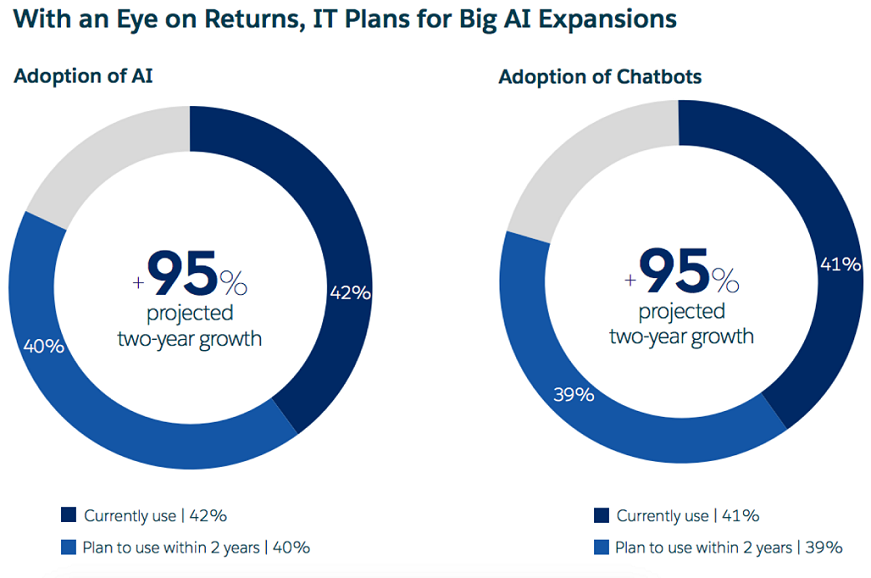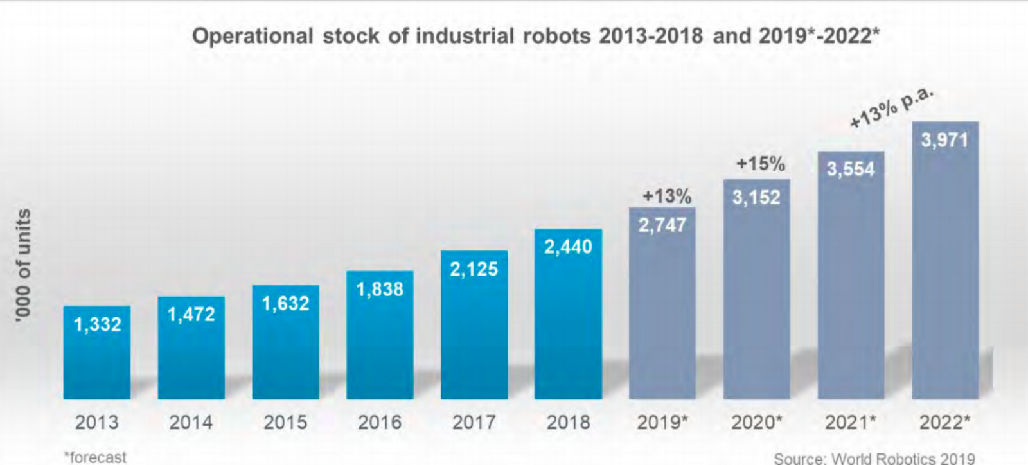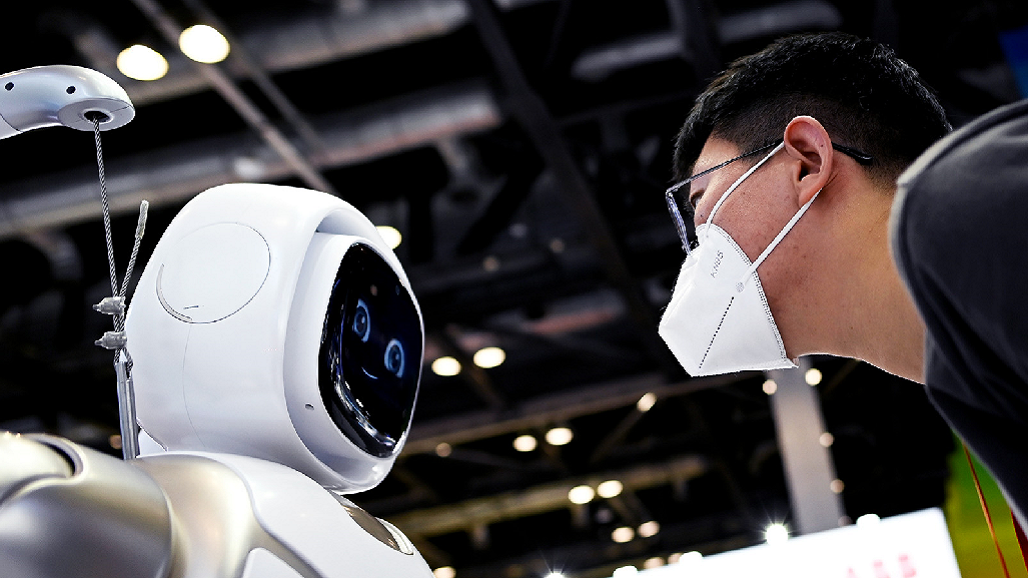Photo: Wang Zhao/AFP via Getty Images
A man wearing a face mask looks at a robot in Beijing. The use of industrial robots became increasingly widespread in 2020.
 A year is a long time in the technology space. In 2019, much of our focus was on blockchain and 5G, but in 2020, it was all about artificial intelligence and its rapid adoption into business practices — something that was hastened by the onset of COVID-19. But among the 50 pieces that BRINK published on technology in 2020, we also covered cyberattacks, fintech, digital healthcare and other areas of technological expertise.
A year is a long time in the technology space. In 2019, much of our focus was on blockchain and 5G, but in 2020, it was all about artificial intelligence and its rapid adoption into business practices — something that was hastened by the onset of COVID-19. But among the 50 pieces that BRINK published on technology in 2020, we also covered cyberattacks, fintech, digital healthcare and other areas of technological expertise.
The Rise of AI
In the past, one of the challenges of adopting AI has been the cost. But that is changing from an increase in open source AI comes into the market. Justin Starr, the vice president of digital transformation at PreScouter, says that companies can experience huge efficiencies from quite straightforward AI uses:
“Companies that are able to leverage AI on existing data sets can immediately begin identifying causal relationships and generating a return on investment. Effectively, this means that AI projects can generate a 3-5 times ROI and cost less than any capital improvement program.”
This has not gone unnoticed by companies: In February, even before the full onset of COVID-19, we published a graphic from Salesforce showing companies’ rapid expansion plans for AI.

In “Here Are 3 Ways AI Could Help You Commute Safely After COVID-19,” CEO and Co-Founder Amos Haggiag of Optibus pointed out the various ways AI can help ensure safe public transport post-COVID:
“Artificial intelligence can help us all travel at ease by crunching huge amounts of data, devising optimal schedules and journeys and adapting them to the rapidly evolving situation.”
CEO Steve Potter of Odgers Berndtson, U.S. wrote about the way in which AI is transforming talent search and the ability to fit people to the right jobs:
“Though it would have seemed impossible just a few years ago, AI algorithms can now aggregate personal and organizational profiles from billions of social, public and enterprise sources and use them to build a continuously updated portrait of the labor market.”
Meanwhile, we showed how industrial robots became increasingly widespread in 2020:

Can AI Design a Fair Tax System?
Stephan Zheng, the lead research scientist at Salesforce Research, posed a fascinating possibility in his piece: “Can AI Build a Tax System That Supports Equality?”
“In our simulations, the AI Economist achieved a 16% gain in the trade-off between equality and productivity compared to the next best framework, the Saez model. Compared to the free market, the AI Economist also improves equality by 47 percent, with only an 11% decrease in productivity.”
AI’s treatment in the law was another challenge that we covered. In his piece, “Should AI be Treated the Same as Humans Legally,” Ryan Abbott, the author of The Reasonable Robot, argued that the law is biased in favor of AI because companies do not have to pay payroll tax on an AI ‘employee’, thereby incentivizing the adoption of robots over humans:
“The even bigger problem may be that automation can dramatically reduce tax revenue. That’s because 90% of the U.S. federal government’s revenue comes from payroll and income taxes. A relatively small amount, less than 10%, comes from company taxes.”
Bias in the Machine
Bias within algorithms has become a major focus of academic study. CEO Rumman Chowdhury of Parity and Mona Sloane of New York University explored the concept further in “The Risks of Using AI for Government Work”:
“The public use of an algorithmic decision-making system has different requirements than a private-use product. It is acceptable for a private company to create a product that addresses the needs of, for example, 80% of their target market. However, if this product is translated to public use, addressing the needs of 80% of your constituency is unacceptable.”
Mona Sloane also wrote about the problems of relying on ethics codes to curb the danger of bias in AI, while Kartik Hosanagar, a professor of technology at the Wharton School, addressed a major concern in his piece called “How Can We Stop Algorithm Bias?” He concluded that it is possible to give consumers a digital bill of rights that at least provides them with some transparency in how AI makes a decision:
“it’s much easier in the long run to fix and correct biases in algorithmic decisions than in human decisions. Correcting gender or race bias in humans is incredibly hard.”
AI in Health
AI offers much promise for healthcare, but there are considerable risks too. COVID-19 has accelerated the acceptance of digital healthcare tools, such as telemedicine, online symptom checkers, use of robots in hospitals and algorithms in surgery. This is particularly seen in Asia, according to Kitty Lee and Matt Zafra of Oliver Wyman’s Health & Life Sciences practice. Kavitha Hariharan, the director of healthy societies at Marsh & McLennan Advantage, argues that male bias pervades every step of the process that shapes health care — from discovery and testing to clinical practice and outcomes — but that this could be changed with AI:
“To ensure health equity for women, we need a sex and gender lens incorporated into data, algorithms and health care.”
BRINK’s most widely read pieces on technology in 2020 were as follows:
Technology
Could CRISPR Create a COVID-19 Vaccine?
Online Education in China Spikes Due to COVID-19
Is Coronavirus a Tipping Point for Digital Health on Demand?
As Remote Work Takes Root, Do Tech Workers Face Pay Cuts?
Cyber Risk Grows As Criminals Exploit the Coronavirus Crisis
If you would like to read more of our technology articles in 2020 — anything from the risks in digital time to the rise of esports and use of drones in the city — you can find them all here.
Artificial Intelligence Cybersecurity Future Of Work
 Thomas Carver
Thomas Carver
Executive Editor of BRINK News
Thomas Carver is the executive editor of BRINK News. Carver was vice president for communications and strategy at the Carnegie Endowment for International Peace, and a journalist for the BBC from 1984 to 2004.
The Global Economy on BRINK in 2020
A Year of BRINK: What We Learned in 2019
What Did BRINK Readers Learn about the Workplace in 2018?
The original article can be read at the Brinks’ website HERE


Leave a Reply